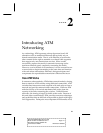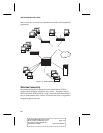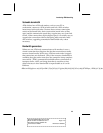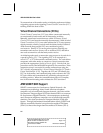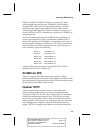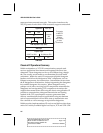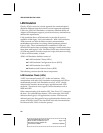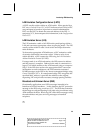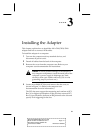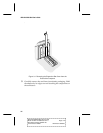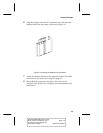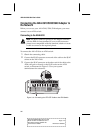
2-7
Introducing ATM Networking
ANA-5910/5930/5940 User’s Guide
Stock Number: 510694-00, Rev. C Page: 2-7
Print Spec Number: 493081-00
Current Date: 5/28/97 ECN Date: 05/29/97
stands for User Datagram Protocol. Both TCP and UDP have
associated processes and applications that produce the messages
and streams TCP and UDP receive and deliver. While TCP provides
a reliable data transport mechanism to host applications including
checksums, UDP provides applications-specific IP addresses but
only provides its applications access only to IP’s connectionless,
unreliable delivery.
Classical IP over ATM
Within contemporary networks, host IP software and IP routers get
datagrams from network sources to network destinations. Within an
ATM network, the ATM adaptation layer intercepts and converts IP
datagrams to and from cells. This spans the message transmission
differences inherent within each communication design. However,
it does not address the behavorial differences between components
above this layer. For instance, unlike ATM, the legacy delivery
process does not itself guarantee reliable, in-order delivery.
Because TCP/IP applications were designed in LAN environments
that naturally provided broadcast services that are unavailable with
native ATM, other differences also require consideration before ATM
can seamlessly transport IP datagrams. These mechanisms resolve
IP addresses to ATM network addresses and provide TCP/IP’s
Address Resolution Protocol (ARP) support. Many of these
considerations are resolved in the Internet Engineering Task Force
(IETF) Request For Comment 1577 (RFC 1577). This document
provides protocols, collectively referred to as Classical IP over ATM,
that introduce the concept of a





